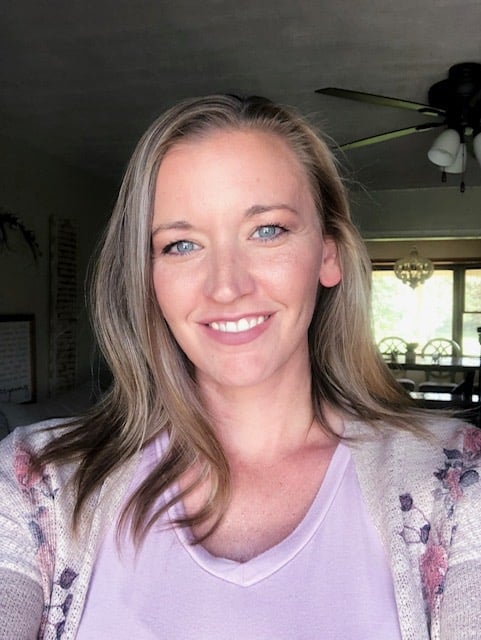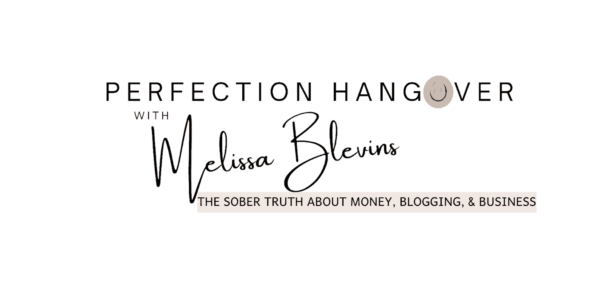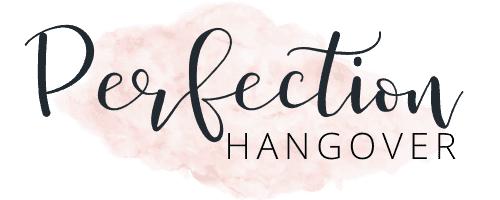This post may contain affiliate links. Click here to read my full disclosure.
So you want to buy your first house, but you have no idea what types of home loans are best. I’ve been there! I’ve purchased a few homes in my life, and I remember how confusing it was (even when I was a wee baby banker back in the day).
The home buying process shouldn’t be painful, and you’ll be a lot more prepared if you read and save this video to your favorites for later.
Feel free to read along or watch the quick video above where I summarized the different types of home loans. Don’t forget to subscribe to my YouTube channel for the sober truth about money, blogging, and business!
Related Home Loan and Real Estate Articles:
- How to Flip a House for Profit When You Live in It
- Buying a House Before Marriage {How to Protect Your Investment}
- Home Buying Checklist {What Happens in Escrow}
- Real Estate Agent Income – Your First Year
Budgeting for Home Loans
If you’re new here, have a look at some of my other blog posts. I talk about the importance of a budget in nearly every single video and blog. As a self-proclaimed free-spirited nerd, I know exactly what needs to be done, with regards to our finances, but I get easily distracted by flashy things that totally derail my progress.
I am easily tempted to spend money on things that have nothing to do with my goals. Having a budget keeps me accountable to our plans and helps us stay on track. Dave Ramsey frequently talks about the free spirit personality vs the nerd personality, and I have both of them mashed into one person. The struggle is so REAL!
Ideally, your mortgage payment (including taxes and insurance) should be no more than 25% of your take-home pay on a 15-year fixed mortgage. The goal is for you to be 100% out of debt fast and have a fully-funded emergency fund before you buy a home. The last thing you want to do is to be house poor (that is spending a huge chunk of your income on your home).
A home is already the biggest, most expensive purchase you’ll probably ever own, so make sure you really research the different types of home loans, rates, and term before you even sit down with a mortgage loan officer.
When you only have 25% of your take-home pay going to your house payment, that frees up 75% for tithing or giving, saving and investing, retirement, college savings, regular expenses, and just having fun living life!
If, when you start researching different types of home loans and areas to purchase a home, you find that the taxes are outrageous in your area, you may want to consider expanding your search radius. My kids attend some of the best public schools in the State of Illinois.
We live in the country, right next to a historic covered bridge on 2 acres of land. Our taxes and utilities are extremely low because of our rural location. Even though we are a five-minute drive to our kids’ schools, we are far enough away that it makes a huge difference in taxes.
If we were to move seven miles into town, on a 1/4 acre lot, the taxes would be approximately $5000 per YEAR more expensive! Over ten years, that’s $50k! That’s a huge chunk of the kids’ college fund!
So know your numbers BEFORE you start looking. Tax assessor records are usually available online, free for you to perform searches on your favorite properties. Use a mortgage calculator like this one, and make sure you add an estimate of taxes and homeowners’ insurance, also known as escrow.
4 Types of Home Loans to Consider
FHA Home Loan
An FHA loan is a mortgage that’s insured by the Federal Housing Administration (FHA). They are popular especially for first time home buyers because they allow down payments of 3.5% for credit scores of 580+. However, borrowers must pay mortgage insurance premiums, or PMI, which protects the lender if a borrower defaults (that’s if you stop paying your mortgage payment).
FHA loans are a “hail mary” for many Realtors® due to the number of exceptions that can be made. My very first home was purchased with an FHA loan (back in 2004 when they only required 3% down payment), and I was lucky I sold it 3 years later before the bubble burst and made a small profit. If you’re struggling to scrape up the funds to come up with a down payment, how are you going to pay for a new furnace when it breaks?
I mentioned the PMI, or mortgage insurance premium. This isn’t the same thing as homeowners’ insurance. This premium does YOU, the buyer, no favors. PMI is required when you don’t put at least 20% down payment on a home purchase. FHA PMI has higher rates than any other loan program, and unlike the conventional loan, the premium isn’t removed from the loan after you’ve reduced the principal balance by at least 20%. FHA PMI is for the life of the loan.
You might be thinking, “But Melissa, we bought our house with an FHA loan several years ago! What do we do now?” You can talk to a mortgage loan officer about a possible refinance to lower the term and possibly even the interest rate. There are some fees associated with a refinance, so you’ll want to discuss the pros and cons with your lender to see if it’s a good decision.
VA Home Loan
Wikipedia shares: a VA loan is a mortgage loan in the United States guaranteed by the United States Department of Veterans Affairs (VA). The program is for American veterans, military members currently serving in the U.S. military, reservists and select surviving spouses (provided they do not remarry) and can be used to purchase single-family homes, condominiums, multi-unit properties, manufactured homes and new construction.
The VA does not originate loans but sets the rules for who may qualify, issues minimum guidelines and requirements under which mortgages may be offered and financially guarantees loans that qualify under the program.
The basic intention of the VA home loan program is to supply home financing to eligible veterans and to help veterans purchase properties with no down payment. The loan may be issued by qualified lenders.
The VA loan allows veterans 103.3 percent financing without private mortgage insurance (PMI) or a 20 percent second mortgage and up to $6,000 for energy efficient improvements. A VA funding fee of 0 to 3.3% of the loan amount is paid to the VA; this fee may also be financed and some may qualify for an exemption.
In a purchase, veterans may borrow up to 103.3% of the sales price or reasonable value of the home, whichever is less. Since there is no monthly PMI, more of the mortgage payment goes directly towards qualifying for the loan amount, allowing for larger loans with the same payment.
In a refinance, where a new VA loan is created, veterans may borrow up to 100% of a property’s reasonable value, where allowed by state laws. In a refinance where the loan is a VA loan refinancing to VA loan (IRRRL Refinance), the veteran may borrow up to 100.5% of the total loan amount.
The additional .5% is the funding fee for a VA Interest Rate Reduction Refinance. So instead of having PMI, the VA has renamed it a “funding fee”.
VA loans allow veterans to qualify for loan amounts larger than traditional Fannie Mae / conforming loans. Standard VA guidelines state that the VA will insure a mortgage where the monthly payment of the loan is up to 41% of the gross monthly income vs. 28% for a conforming loan assuming the veteran has no monthly bills, although there is no hard limit to the DTI for a VA home loan.
Veteran’s have been known to be approved with a DTI of up to 80%, if there are other factors that strengthen their loan application. These factors include a low Loan-To-Value (LTV), sufficient residual income, additional income received but not used to qualify for the loan, good credit, etc…
The maximum VA loan guarantee varies by county. As of 1 January 2018, the maximum VA loan amount with no down payment is usually $453,100, although this amount may rise to as much as $721,050 in certain specified “high-cost counties.”
I really can’t see the benefit of purchasing a home at 100% loan to value. I’ve got experience in this area as well, and trust me…it’s not a benefit to buy your first house with no nest egg and no equity to show for it.
USDA/Rural Development Home Loan
The USDA, or Rural Development home loan, is another 100% loan to value, no down payment loan program available to purchasers who meet credit and income eligibility requirements. The most notable feature of the USDA loan is that it’s only available in certain rural areas. You can check to see if a home qualifies here. The USDA loan program requires a guarantee fee, much like PMI but, much like the FHA home loan, doesn’t drop off after 20% principal loan balance has been paid.
Conventional Home Loan
You made it to my absolute favorite loan program! It offers the lowest-cost PMI compared to the other three home loan types, and you have options from adjustable or fixed rate to length of term. Note: If you purchase a home with an adjustable rate, be prepared for the rate to go up. Rates have been hovering around 4% for several years now, but don’t expect them to be that low forever! An ARM may sound enticing, but it’s always safer to go with a 15 year fixed mortgage, although 10-year, 20-year, and 30-year mortgages are also available. Remember to keep your payment (including escrow) within 25% of your take-home pay, and you’ll be on the right track!
WOW! That was a ton of information! If you’re left scratching your head and don’t know where to start, I can help with a budget analysis. It definitely helps to have another set of eyes looking over your budget before you make the biggest purchase of your life! I’m happy to help! Just Take a look at my calendar and we’ll schedule an appointment to go over your budget. Let me know what you think of these 4 home loan types.
Bonus Home Loan: Physicians Mortgage Loan – Have you heard of this home loan for doctors?

Life is a collection of memories and experiences. There are ups and downs. I am so grateful for God’s grace and am on the journey to a renewed spirit, free of perfectionism. Perfection Hangover offers the sober truth – no filter.


